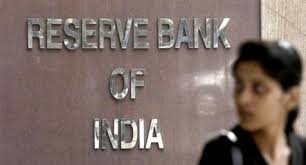Retail inflation rate drops, giving RBI breathing space

NEW DELHI (Reuters) – India’s retail inflation rate dropped sharply in October, giving the central bank leeway to allow easier lending policies, but plunging farm prices sent a stark warning to Prime Minister Narendra Modi about the challenges he faces in rural areas in next year’s general election.
The rate, which includes food and energy prices, dropped in October to 3.31 percent on a year-on-year basis, the slowest pace in 13 months and remains below the Reserve Bank of India’s (RBI) medium-term target of 4 percent for a third straight month. The September inflation rate was a revised 3.70 percent.
Inflation risks have ebbed after a fall in global crude oil prices by about 20 percent since early October to around $ 71 a barrel. The rupee has also stabilised after a slide of more than 14 percent in the first 10 months of this year, which has made it the worst performing Asian currency in 2018.
The RBI’s monetary policy committee unexpectedly left the repo rate at 6.50 percent last month when markets had expected a hike.
In October, the drop in consumer prices was mainly due to the fall in food prices, data released by the Statistics Ministry showed on Monday.
Analysts polled by Reuters had expected the October retail inflation rate would ease to 3.67 percent, with estimates ranging from 3.23 percent to 5.20 percent.
A.Prasanna, chief economist at ICICI Securities Primary Dealership Ltd, said food inflation continues to be more benign than expected despite fears that some prices might spike as the government steps in to buy crops at higher prices.
“The Monetary Policy Committee will take comfort from headline and we expect a pause in December,” he said in reference to the chances the RBI would raise rates before the end of the year. “We still expect a hike in February but will reassess the same given recent inflation prints and fall in oil prices,” added Prasanna.
Slower inflation in food prices, which make up nearly half of India’s consumer price index (CPI), are helped by bumper crop supplies and sale of subsidised foodgrain to nearly two-thirds of India’s population of 1.3 billion. That has, in turn, helped keep overall inflation in check.
Retail food prices fell 0.86 percent in October from a year earlier, against a 0.51 percent rise in September, as farm prices dropped despite the government’s announcement of sharp increase in foodgrain procurement prices ahead of state elections in the next few weeks.
TEMPORARY RELIEF
Modi is in danger of losing support in the countryside. Farmers hit by falling farm prices and rising unemployment could undercut his efforts to woo young voters.
Core inflation, which excludes volatile food and fuel prices, came in at 6.1 percent, up from 5.8 percent in September, according to analysts. That is because of higher prices for consumer goods and services during the Diwali Hindu festival season.
The RBI has projected a retail inflation rate of 4.8 percent by June 2019, slightly lower than its August forecast of 5.0 percent.
It has raised its policy interest rate 50 basis points since June, and is widely expected to raise rates by at least 25 basis points more by March 2019.
The next policy review is due on Dec. 5.
Separately, industrial output expanded at an annual 4.5 percent pace in September, compared with 4.3 percent forecast by economists in a Reuters poll, and the upwardly revised 4.7 percent for August.






